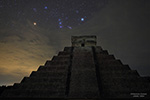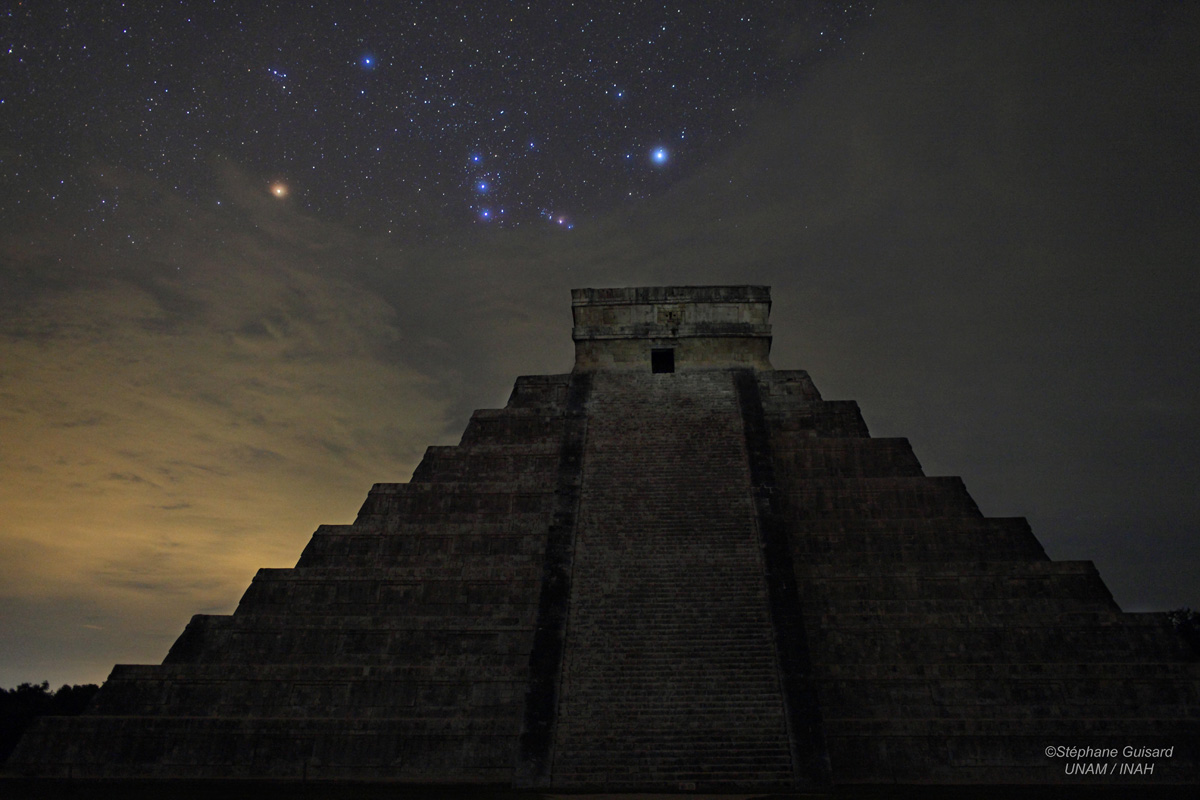HOME
Chichen Itza (Yucatán, Mexico) - A Major Mayan city
and UNESCO world heritage site
© Stéphane Guisard, Los Cielos de Los Mayas
Credits:
- Daniel Flores and Barbara Pichardo, ("Astrofotografía en Mesoamerica" project) / Instituto de Astronomia of the Universidad Nacional Autónoma de México (UNAM).
- Dr. Pedro Francisco Sánchez Nava (Presidente del Consejo de Arqueologia) and Arq. Ricardo Nafate (Jefe de la Zona Arqueologica de Chichen Itza) / Instituto Nacional de Antropología e Historia (INAH).
- Stéphane Guisard (Picture) / Los Cielos de América.
Chichen Itza was one of the greatest Mayan centres of the Yucatán peninsula. Throughout its nearly 1,000-year history, different peoples have left their mark on the city. The Maya and Toltec vision of the world and the universe is revealed in their stone monuments and artistic works. The fusion of Mayan construction techniques with new elements from central Mexico make Chichen-Itza one of the most important examples of the Mayan civilization in Yucatán. Several buildings have survived, such as the Warriors’ Temple, El Castillo and the circular observatory known as El Caracol. In 1988 it was declared a UNESCO World Heritage Site.
From an astronomical point of view, observing the sky was a continuous activity for the Mesoamerican civilizations that allows them to identify the time of the year and check the accuracy of their calendars. Among them, Mayan people were very fine astronomers. They observed the stars, the Sun, the Moon, the planets (especially Venus) and their motion during more than 1000 years ! They could for example obtain an accurate value of 365.2422 days for the tropical year [1] ! Note that the length of the tropical year changes due to precession and nutation motions affecting the Earth rotation. Actual value of mean tropical year is 365.242189 days and value around year ~1000 was 365.2422509 days [2].

Picture below : Orion rising above "El Castillo" (Spanish for "castle"), also known as the Temple of Kukulkan. El castillo was built by the pre-Columbian Maya civilization sometime between the 9th and 12th centuries. The pyramid consists of a series of square terraces with stairways up each of the four sides to the temple on top. The structure is 24 m high, plus an additional 6 m for the temple and the square base measures 55.3 m across. In the Mayan era, the celestial equator, nowadays passing close to Orion belt, was located towards the northern part of the constellation. It is accepted that the Orion constellation was represented as a turtle, and is also called the "heart of heaven".

[1] Ruiz, J.J.,1966, Journal of the Royal Astronomical Society of Canada, Vol. 60, p.132.